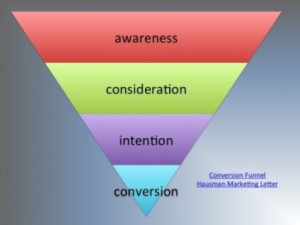
Ever feel like you’re talking to a wall? Do you hate making blog posts and getting no interaction? How about making a social post that flops?
If you’ve had these experiences, you probably haven’t fleshed out your buyer personas.
According to Hubspot, a buyer persona is:
“A semi-fictional representation of your ideal customer based on market research and real data about your existing customers.
When creating your buyer persona(s), consider including customer demographics, behavior patterns, motivations and goals. The more detailed you are, the better.
Buyer personas provide tremendous structure and insight for your company. A detailed buyer persona will help you determine where to focus your time, guide product development, and allow for alignment across the organization. As a result, you will be able to attract the most valuable visitors, leads, and customers to your business.”
Hubspot explains a buyer persona well, but what goes into making an awesome buyer persona and how does it help you deliver value to your clients?
First let us talk about why you should care to spend the time and resources building your buyer persona. Creating an accurate buyer persona saves time, money and resources in the long run. Let me share a personal example.
When I first started advertising on Facebook, I had no idea who my buyer personas were. My targeting was way off, the copy didn’t speak to the audience, and the images didn’t invoke the right emotions. Obviously, I didn’t know this when I began, otherwise I would have created a more targeted ad that spoke to my audience.
The result? My cost per click was $ 1.09 and my cost per lead was $ 5.34. For those of you that don’t know, that is “expensive” for advertising. A cost per click should be under $ .50. THis was not a sustainable solution to drive traffic for my marketing budget.
I spent the time and energy learning who my buyers were, and fleshed out my buyer personas. This resulted in a dramatic decrease in cost. Currently my cost per click is .25c and my cost per lead is .75c. That is a significant increase in ROI (return on investment). As I test and refine, these numbers will continue to drop. My goal is to achieve .10c per click and .25c per lead.
You may ask—what did I do to understand my audience? The first thing I did was audit my current clients and clients that I sought to work with. I identified who they were, their hobbies and interests, the ideals they run their lives by and typical demographics like age, income, etc.
Demographic Aspects of A Buyer Persona
By far the easiest part of a buyer persona to define and understand is the demographic information. Demographics are factual based observations about a type of client.
This can include:
- How old is your ideal client?
- How much money do they make?
- What is their profession?
- Are they male or female?
- Where do they live?
- Do they have a family, if so how many in the family?
- What nationality are they?
- Any other relevant data you can acquire that makes sense.
Why is this information important? For example knowing the age of your ideal client allows you to have an understanding of their worldview. A worldview is a frame of reference that someone sees the world through.
For example, a baby boomer with more years of wisdom and who has grown up in a very different environment will not have the same worldview as a millennial. Baby boomers and millennials have very different trials and tribulations that shape how they understand and interact with the world and their communities.
Age for example allows you to speak to your audience in a certain tone of voice. As a 27 year old, if I were writing to a 40 year old crowd, I would make sure to use a more respectful tone. If I were talking about social media, I would explain more in detail and not assume they have experience on Twitter or the like.
If I were writing to a demographic of 20 something’s, I would write more casually with pop culture references to connect to my audience. References to the soda beverage Surge, would get them to chuckle and say “hey he is one of us”
Now on to the psychographic information: the more challenging to understand and define. This information describes how your audience THINKS and FEELS. The important question to ask when determining psychographic information is—WHY?
Your goal is to be like Louis C.K’s daughter in this skit:
Before we talk about psychographic information we need to understand a fundamental concept. Everyone in the world including your potential customers, have an end goal they wish to achieve. Examples could include spending more time with their loved ones, living a healthier lifestyle, making more money, or just escaping from the world and having a good laugh.
Knowing this information allows us to relate to our customers, and understand what matter to them. As business owners, our goal is to solve their needs and market to them more effectively.
Psychographic information of a buyer persona includes:
- What do your customer do in their free time? Why?
- What/who influences their decisions? Why?
- What news/media outlets do they read? Why?
- What defines their life? How do they define their character? Why?
- What goals do they wish to achieve in life? And why?
- What is stopping them from achieving their goals? And Why?
Knowing what goals your customers wish to achieve can help you position your business as a leader. You can help your customer achieve their goals with free content; this earns their respect and trust. Eventually you won’t have to sell to them. Your audience will just be looking to buy from you because you’ve become the source of all answers and they trust you.
For example, I am a brand strategist that teaches people how to start and grow their businesses. If someone is looking to start their own business and I help them get up and running and make a profit without charging them a dime– I gain trust.
I can show them how to make a website for free, how to position their company to be a leader, and how to generate traffic. If down the line, after they are making a nice profit, I ask them to buy my online course, they will.
This is a simple principle laid forth by Jay Abraham.
Why is it important to know information such as what your customers do in their free time, or what media outlets they watch?
Let’s assume you are looking to gain more brand exposure. Your audience spends their free time doing extreme sports like BMX, snowboarding, rock climbing, and cliff diving. You could sponsor athletes in those fields or advertise in those publications.
This is exactly what Monster, Redbull, and GoPro did. Those brands sponsor events like the X-games, Olympics, and Guinness book record-breaking attempts. To reach their market: people that love extreme sports. (like me)
How do you build a buyer persona?
There are many ways to build a buyer persona, but I have found using a template saves me a ton of time and energy. If you need a template, I have a free buyer persona template that you can download here.
Next, find out where your ideal customers spend their time.
Here are some examples of where you can find your customers. You need to assess where your audience spends it’s time. I would recommend engaging on all platforms and monitoring where you receive the most engagement.
- Go into Facebook Graph search and find Facebook groups with your target audience.
- (For example, if your audience is interested in surfing, join surfing groups).
- If you are selling to the B2B market I would suggest Linkedin Groups.
- Google Plus Communities are alive and well and very active. Join communities that represent your target demographic and engage with them.
- If your ideal client is based locally, take them out to lunch and listen to what they are saying.
- If you have never been in business and don’t know whom you are selling too, start by laying out your personal values and goals. See if they align to what you think your audience has. Go out and test and do market research. Create a survey on Typeform and send it to your email list, and post it on social media.
How to research your buyer persona cheaply
Surveys are an easy way and cost effective way to gather the information needed. For example, I recently launched a new consulting program for entrepreneurs. Every week they call for 30mins and we solve a major problem they need to grow their business. “How do I get more clients? How do I manage my workflow? How do I show the value so prospects say Hell YES!”
To determine if this type of program would be of value to my target demographic. I made a survey up using Typeform. From there I asked potential customers to fill it out and the results I received were amazing. I received 20 leads in a matter of days, That whittled down to 10 qualified leads.
I also received answers that would astonish you in terms of learning how the customer thinks and feels. One of my questions was: “why would this program be a perfect fit for you?”
An answer I received verbatim was:
““I need someone to work with who is willing to both push and realize when they’re pushing too hard. I need accountability and the ability to ‘jump’ over things I know and tackle the things I don’t know or haven’t been willing to tackle because of my own internal resistance or lack of understanding.”
”
Talk about getting deep in one answer. This and other answers I received have allowed me to know exactly how to write my copy so it speaks to my ideal customer.
I literally use their words and phrases in my sales and marketing copy.
How and when to use a buyer persona
A buyer persona is a tool to visualize and speak to your customer. That being said, whenever your business could be interacting with a customer you should be using your buyer persona.
For example, if your market is the millennial audience, going on shows like “The Daily Show” makes sense, because the audience is full of millennials. If your audience is professionals in marketing and entrepreneurship, guest blogging on sites like Business2Community and Small Business Trends will garner you higher results. Knowing where your audience spends its free time is the key component when deciding your PR outreach campaign.
Need a buyer persona template? Download your free workbook pack here.
Have any questions when it comes to building a buyer persona? Leave a comment and I will be happy to answer them for you.
(270)



